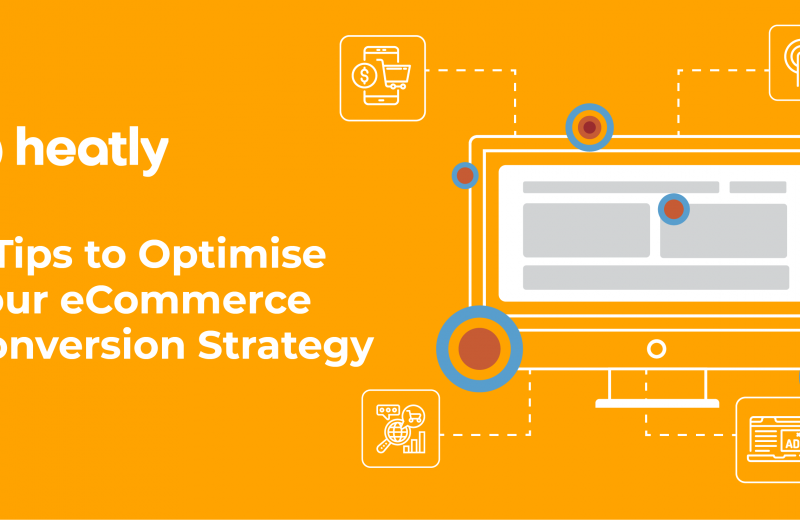Online shopping is becoming a more convenient option than walking into a shop and looking for things you need. And it is quite tempting—who wouldn’t want to scroll through dozens of shopping catalogues while sitting in the comforts of their home? In Australia alone, approximately 73% of families shopped online last 2018 with about $27.5 billion in spending!
Year after year, it is becoming evident that eCommerce is the future of retail.
While having a brick-and-mortar store allows you to build personal and sentimental connections with your business, online retail extends your reach to people who might not have the capacity to visit your store. By setting up a website, more people can learn about your business, be nurtured, and turn into loyal customers. To make things more convenient for their customers, stores like Coles, Target, and Woolworths have gone online. Some stores like JB HiFi not only leverage their site to sell home entertainment appliances but also to provide visibility for their stores around Australia.
If you are ready to build an eCommerce site for your business (or already have one), here are some tips to help you optimise your conversion rate.

1. SEO-ptimise Your Content
What are your customers’ needs? Learn the language they speak and familiarise yourself with their day-to-day challenges so that you create a more personalised experience. Of course, this should include researching your buyer persona and doing keyword research.
Because your eCommerce site is still the storefront to your business, you need to make sure that people can find you on the world wide web. Optimise your URLs so that people can infer what the webpage is all about and use the right keywords when naming your product pages so that they pop up on people’s search results. If you sell a lot of products with duplicated information, tag your preferred URL with “rel-canonical”.
Alongside this, gather data on your buyer persona. This ensures that you can leverage your keywords to create a content strategy that appeals to your market. Not only will you rank higher on search engines but your customers will see you as a trustworthy site.
2. Develop a User-friendly Interface
A seamless interface allows your customers to explore your site with the least amount of friction. When they click onto your page, how long will they have to wait for the screen to load? According to Pingdom, around 38% of your potential visitors leave your site when it loads for five seconds—only increasing for every second that passes. Using a content delivery network (CDN) decreases your load time effectively because it sends your site’s static images and codes to visitors from a closer server. Once they click onto your page, installing a caching plugin saves your data on their device so that your webpage content can load faster the next time.
Now that most consumers turn to their mobile phones when they want to make a purchase, make sure your site is mobile-friendly. Optimise your website by making a simple site design with small file sizes for images while also appealing to your target market.
When developing your website, use programming languages like CSS and JavaScript to ensure that it is compatible with any kind of device that people use.
You can also use heatmap tools to gather data on your user interface. By gathering user behaviour information, you can see if people interact with your site just as you intended. If you find that some buttons aren’t working on your website, you can fix its functionalities to cater to your customers’ needs.
3. Align Site with Brand Style and Story
First impressions matter. When visitors click onto your website, make sure that you weave a visual story that they will remember. If you already have a logo that’s unique to your brand, take this a step further and consider what visual style your website should have. Standardize image quality, video outputs, and colour schemes on your website by meeting together with your team and establishing a branding strategy.
As video posts are performing better on social media, you can also upload videos on your website. For example, you can provide a reel of how your product is manufactured or demonstrate how it works. Pairing this with high-resolution images, you are already providing details to your customers that they won’t need to read about. Thanks to today’s technology, you can take a 360° image that allows visitors to see the entirety of the product in one viewing. When selling products in different colours, set your customers’ expectations by providing images for each one. Through this, you can design digital collaterals consistently and increase brand awareness and customer appeal.
4. Create Retargeting Ads
Remarketing or retargeting is a type of advertising that helps customers stay aware of your brand even after they leave your website. A majority of your customers are people who have visited your website a couple of times. To encourage them to return more often and purchase from your site, use ads to feature products that they have shown interest in. You may also offer other relevant products based on their user behaviour.
This is where cookies come in. Whenever a cookie form pops up on the site you’re visiting, this means that the website wants to keep track of your preferences. By placing a JavaScript pixel on your visitors’ browsers (once they’ve given their consent), you can create a more personalised ad experience.
5. Simplify Your Checkout Process
Requiring your visitors to create an account before checking their products out lessens their likelihood to complete the buying process. It is recommended to keep your checkout process no more than three steps to avoid frustrating customers and foster a smooth transaction. You may also add a progress bar feature to set your customers’ expectations.
Building a website can be quite a commitment. However, if you are ready to take the next step for your business, it’s time to create a unique experience for your customers by applying these tips. Once you understand your market’s needs and set your strategy in place, ensure that your website follows through on your goals. Keep it responsive and simple so that it is optimised for sales and success.




